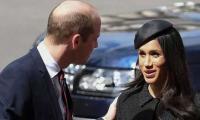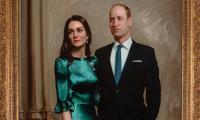Fleeting moments
Two summit conferences – one in Beijing and another in Saudi Arabia – were held in May. While US President Donald Trump dominated the summit in Saudi Arabia, Russian President Vladimir Putin carried the show in Beijing.
Trump talked of launching missiles in Syria. He threatened to isolate Iran and appeared rather jingoistic in his outlook. On the other hand, Putin emphasised the need for peace and progress between the regional nations. The contrast between the views of two world leaders was manifestly obvious. There was a clear distinction between Trump – who advocated the rumble of guns and bombers – and Putin – who emphasised peace and economic prosperity.
The mainstream US media hailed President Trump’s visit to Saudi Arabia as highly successful. Why would it not? Trump and the Saudi leader had signed a $110 billion arms deal under which the US pledged to supply tanks, THAAD anti-missile system and helicopters to the Saudi kingdom.
This is not all. The $110 billion deal is just part of the overall deal that amounts to $350 billion worth of supply of weapons to the kingdom in the next 10 years. The deal left the US president euphoric: “Hundreds of billions of dollars of investments into the US and jobs, jobs, jobs. That was a tremendous day. Tremendous investments in the US”. The world’s most powerful man couldn’t help showing his apparent glee over the financial killing he had made.
The only exportable hardware which the US produces and exports are weapons that cut short human lives. For the military-industrial complex to flourish, perpetual wars must go on. Ideally, the theatre of future wars will be in Muslim countries. The blood spilled will be of Muslims and the weapons will be bought with petro dollars. Iraq, Libya and now Syria are glaring manifestation of US foreign and defence policy.
Why did the Saudi Kingdom need to buy US-made sophisticated weaponry? Which country in the neighbourhood nurtures hostilities against the holy land? Realistically speaking, none. It’s only that the imperial powers – mainly France, the US and the UK – exploit the Shia-Sunni schisms to their advantage.
Dr Christopher Davidson, the author of After the Sheikhs: the Coming Collapse of the Gulf Monarchies, writes about how the US tacitly supports the ongoing war in Yemen as part of the strategy to “spur fragmentation in Iran allies and allow Israel to be surrounded by weak states”. Davidson went on to write that the war will also weaken Saudi Arabia, pushing the House of Saud into a “full-on hot water”. This, he said, will be “great for the US arms industry”. Clearly, Trump’s visit to Saudi Arabia drew a wedge in the Arab unity, alienating Qatar from the rest of the Gulf sheikhdoms.
The weapon manufacturing industry in the UK and the US has since long thrived on petro-dollars. Moreover, the valuation of oil in US dollar has kept the greenback buoyed so far. When Muammar Gaddafi and Saddam Hussein only partially delinked the valuation of Libyan and Iraqi oil from dollar, both met with a gruesome end. The US dollar, if delinked with the pricing of oil, would go into a tailspin.
When the predatory superpower launches wars to change regimes and control the resources of weak states, what do Russia and China offer to their regional neighbours? Leaders of both giants have vowed to develop economies of the regional nations. Addressing the One Belt, One Road forum – which was hosted by China – Putin assured Russia’s commitment to work with its regional partners to develop a “political and economic landscape of the continent and bring peace, stability, prosperity and a new quality of life to Eurasia ...Greater Eurasia is not an abstract geopolitical arrangement but, without exaggeration, a truly civilisation-wide project looking toward the future”. Putin reminded participants at the Beijing Forum that the future belongs to Eurasia.
On the occasion, Putin paid high tributes to Chinese President Xi Jinping for his prescience in developing an infrastructure for transport, industry and human collaboration and ensuring that the energy needs of the region are met. This only proves how true leaders work to unite other countries to develop commerce and industry for the common good of their populations.
On the other hand, the imperial powers exterminate large populations and render hundreds of thousands of people homeless to maintain their regional hegemony and to sell hardware of destruction. Why would a superpower want peace and harmony in the world when the prime source of its income is manufacturing and selling weapons of human annihilation? China wins the support of other countries through investment and cooperation. The US intrudes in those countries with its military machine.
Pakistan’s decision to join the security bloc – the Shanghai Cooperation Organisation (SCO) – led by China and Russia is a step towards achieving the great national interest. By aligning with the US in its war on terror, we have suffered a critical blow. Besides losing thousands of innocent lives, our economy suffered a loss of at least $118 billion, according to Finance Minister Ishaq Dar.
If we compare the speeches made by leaders of Russia and China at SCO and the leader of the so-called free world in Saudi Arabia, the leaders of Eurasia spoke with wisdom and foresight while the leader of the mighty power merely hurled threats. It’s time to look towards the East.
The writer is a freelance columnist
based in Lahore.
Email: pinecity@gmail.com
India uses Afghanistan as a backstage area to carry out terrorist attacks against Pakistan
Another report by the Pakistan Institute of Peace Studies states that 78 per cent of attacks have been carried out by...
Pakistan stands at the forefront of this crisis, generating a staggering 3.3 million tonnes of plastic waste annually
Today, a total of 11,000 children are attending Daanish schools in Punjab
The emotional instability of parents inculcates a range of psychological issues in children
The current way of dealing with the environment and climate change is no longer adequate







